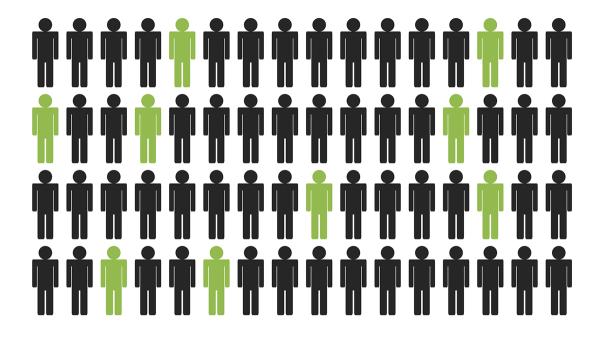Population health data and service data can help you to adapt your services to meet the needs of your community and reduce health inequalities.

On this page:
Teams need to know how to access and collect data about service users and local population health more generally. Local population data and service data can be used to redesign services to ensure everyone can engage with them.
Population health data
What do you know about your local population?
Population health data covers the percentage of a population with various health diagnoses. It is available across the UK from various sources and can be broken down by locality. Compare the data for your area with other areas across the UK.
There may be aspects of the data that surprise you. Are there pockets of the local population that fare better or worse than others? Does the data represent the service users you are seeing?
Once you identify the issues related to your locality, look at your service data to make comparisons.
Sources of population health data
England
Office for Health Improvement and Disparities (OHID):
NHS Digital:
Joint Strategic Needs Assessments (JSNAs):
JSNAs are data profiles collated by local health and care partners on local population health and wellbeing needs. Local authorities and integrated care systems are responsible for producing them. To find relevant data, search online for 'JSNA data' plus the name of your council area.
Northern Ireland
Northern Ireland Statistics and Research Agency (NISRA):
- Census 2021: Main statistics for Northern Ireland, Statistical bulletin, Ethnic group
- Northern Ireland Neighbourhood Information Service
- NISRA portal
Department of Health (Northern Ireland):
Scotland
Scottish Government:
Scottish Public Health Observatory:
Public Health Scotland:
Wales
Welsh local government:
Public Health Wales:
Future Generations Commissioner for Wales:
Relevant to England, Scotland and Wales
You can also refer to the Royal Society for Public Health (RSPH) health inequalities resources.
Creating meaningful data created by CSP members to support members get impactful data about their services.
Using Meaningful data created by CSP members to help support other members to best use service data they have.
Charities can be useful sources of data and statistics. For example:
Quick reference
Population health data
- Health information about your local population and that of other areas of the UK
- Health diagnoses for your local population and across the UK
Service data
- Data you have from your service
- Protected characteristics, patient-reported experience measures (PREMs), did not attend (DNA) rates, attendance, complaints
Service data
What do you know about the people who use your service?
The Equality Act 2010 applies in England, Wales, and Scotland, and the Equality Commission for Northern Ireland mirrors the legislation.
The Act provides legal protection against disadvantage and discrimination based on age, disability, gender reassignment, marriage and civil partnership, pregnancy and maternity, race, religion or belief, sex, and sexual orientation. These are called ‘protected characteristics’.
As a result of the legislation, services collect data on attendance but also on protected characteristics for service users to provide to commissioners. This might include ethnicity, age, gender and so on.
How do I get data for my service users?
Business intelligence or information technology (IT) teams for your service or trust should be able to help you collate data for service improvement if it is not already available. You may need the support of your service manager who is likely to have access to some of this data.
